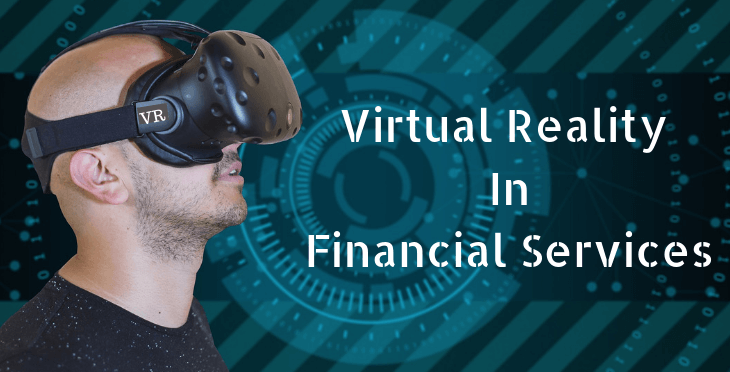The Emergence of Virtual Reality in Financial Services
The financial services sector has moved past the traditional methods of banking.
It is embracing emerging technologies like never before. A new branch in the financial services called "Fintech" has started to transform not only the outlook of the banks but also how they operate.
Virtual reality in financial services has crept into the day-to-day operations, and it is here to stay for at least a foreseeable future.
As these companies are working towards reaching the ultimate customer experience and trying to delight their customers with the best-in-class facilities, virtual reality is one of the financial service's go-to technologies.
It will not only benefit their customers but will also help them to train their employees.
We will be discussing the importance of virtual reality in financial services with the help of some real-life examples in this blog.
Examples of Virtual Reality in Financial Services
To understand the exact significance of virtual reality, we will sub-categorize financial service sectors into the following categories.
- Insurance
- Banks
- Payment Apps
- Investment Banking
Recent technological developments in virtual reality can benefit the insurance companies to train their agents regarding the specific requirements with the help of visual simulations.
For example, auto insurance agents can understand the intricate design of a car and make a judgment with the help of visual simulation to settle an insurance claim.
We will be looking at virtual reality services that can benefit the insurance industry with the help of a couple of real-life examples.
PNB Metlife developed a virtual reality platform called ConVRse, which provides a personalized experience to their customers.
It is expected that ConVRse will add another dimension that will enable customers to get instant access to experts, real-time service execution, ease of knowing claim status, and viewing their policy details while maintaining an interactive experience.
Metlife's innovation center LumenLab and PNB Metlife India built this ConVRse platform in collaboration.
When customers put VR headset in a 3D simulated room, they can interact with a virtual avatar called "Khushi," which will be their insurance expert.
Virtual reality can help investment banking firms by educating their employees about the projected downturns with the help of simulations. This valuable insight can help them to make less risky investments.
Fidelity Investments announced a prototype VR agent Cora which can answer questions regarding stocks. Cora can pull up company charts and also explain how the company is performing.
As a client, you can even ask questions to Cora in a chat room. They are also developing an employee training model.
Cora can also perform market simulations that gauge the client's appetite for risk and train them to face the challenging scenarios in an effective manner.
Also Read: List of Top 5 Immersive Virtual Reality Examples
GTE Financial
GTE Financial, which is one of Florida’s largest credit unions, announced its newest “GTE 3D,” which allows users to “access & experience GTE’s expert guides and their financial services.”
This virtual world is accessible via computers.
It can allow its users to create their own avatar to explore different products and services offered by GTE such as insurance and finance literacy info, home loans, automobile loans, investments amongst many others.
Visitors can open accounts, apply for the loan by becoming a member. They can also avail services like webinars, seminars, events, and other content, including on-demand content.
BNP Paribas presented a virtual reality application that allowed retail banking users to access the transaction records and account activity in a Virtual Reality environment.
BNP Paribas did not stop by creating an app-only, but they partnered with a French start-up, a VR capsule called "the POD."
It was created by keeping in mind the real estate investing customers. The POD will give a virtual tour of the property to its real estate investors.
Citi Bank opened up opportunities on increasing trader efficiency with the help of a 2D-3D holographic workflow.
This combination can benefit your organization by helping you understand the market scenarios and make decisions based on it.
Payscout's merchant processor app for Google cardboard provides a feature with Visa checkout in its menu.
This app went live with an LA-based e-commerce retailer, which enabled shoppers to capture a 360-degree view of the merchandise.
Future Scope of Virtual Reality in Financial Services
As technology is evolving with every passing day, and these adjacent platforms becoming mainstream financial services, companies will need to upgrade themselves to gain and retain their customers as well as employees.
The illustrative world of augmented reality and virtual reality has started to dominate finance sectors just like any other sector.
Companies need to implement innovative AR and VR strategies to stay relevant and thrive in their businesses.
You may also like to read:
7 Simulation Software Use Cases in the Healthcare Industry
Importance of Data Analytics for Financial Services
Impact of Cloud Computing on the Financial Services Industry





